Get clued up on STDs so you know how to avoid catching one and what it means if you do.
-
Tracking cycle
-
Getting pregnant
-
Pregnancy
-
Help Center
-
Flo for Partners
-
Anonymous Mode
-
Flo app reviews
-
Flo Premium New
-
Secret Chats New
-
Symptom Checker New
-
Your cycle
-
Health 360°
-
Getting pregnant
-
Pregnancy
-
Being a mom
-
LGBTQ+
-
Quizzes
-
Ovulation calculator
-
hCG calculator
-
Pregnancy test calculator
-
Menstrual cycle calculator
-
Period calculator
-
Implantation calculator
-
Pregnancy weeks to months calculator
-
Pregnancy due date calculator
-
IVF and FET due date calculator
-
Due date calculator by ultrasound
-
Medical Affairs
-
Science & Research
-
Pass It On Project New
-
Privacy Portal
-
Press Center
-
Flo Accuracy
-
Careers
-
Contact Us
Sexually transmitted infections (STIs): All the types you need to know
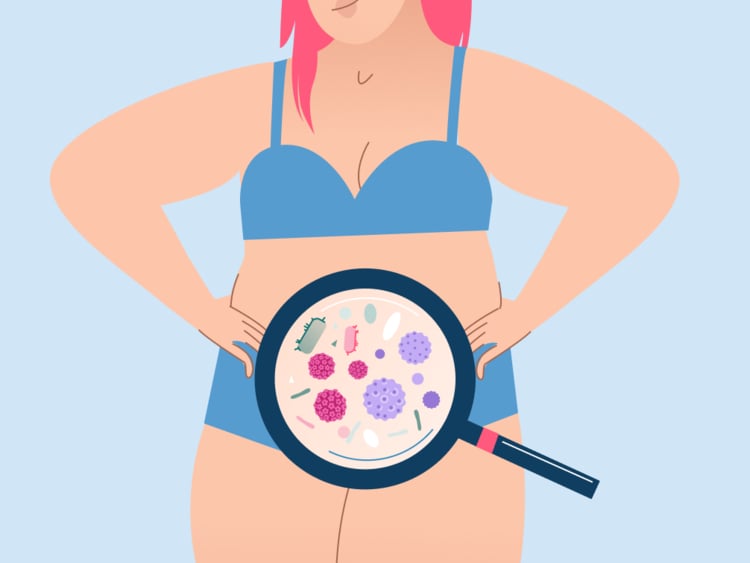

Every piece of content at Flo Health adheres to the highest editorial standards for language, style, and medical accuracy. To learn what we do to deliver the best health and lifestyle insights to you, check out our content review principles.
You’ve probably heard of sexually transmitted infections (STIs). But there’s so much information out there about the different types of STIs, STI testing, STI symptoms, and more; it can be hard to take it all in.
That’s why we’re here to break it down for you and give you everything you need to be as informed as you possibly can.
What is a sexually transmitted infection (STI)?
Put simply, an STI is an infection that’s passed from one person to another through sexual contact. It’s also sometimes referred to as a sexually transmitted disease (STD), but there’s no real difference between what these two terms mean.
There are different kinds of STIs, all with different effects. We’ll go through that in more detail below. You might have heard the myth that ejaculation needs to occur for an STI to spread, but that isn’t the case. So make sure you’re protecting yourself from STDs right from the start of sexual contact (scroll down to find out how).
In 2020, the World Health Organization estimated that there were 374 million new infections, meaning more than 1 million STIs are acquired every day around the world. See why it’s important to clue yourself up on them now?
The good news is sexually transmitted infections are becoming more widely understood, leading to less shame and better knowledge around prevention and testing.
What causes sexually transmitted infections (STIs)?
STIs are most often spread by unprotected sexual contact, which is why it’s important to use a barrier method of protection — such as a condom or dental dam — to protect yourself and your sexual partners. You can get these at family planning clinics, in drugstores, or via your health care provider.
Some STIs can also be transmitted from mother to child during pregnancy, childbirth, and breastfeeding, but this is less common.
Most common STI types, symptoms, and treatment
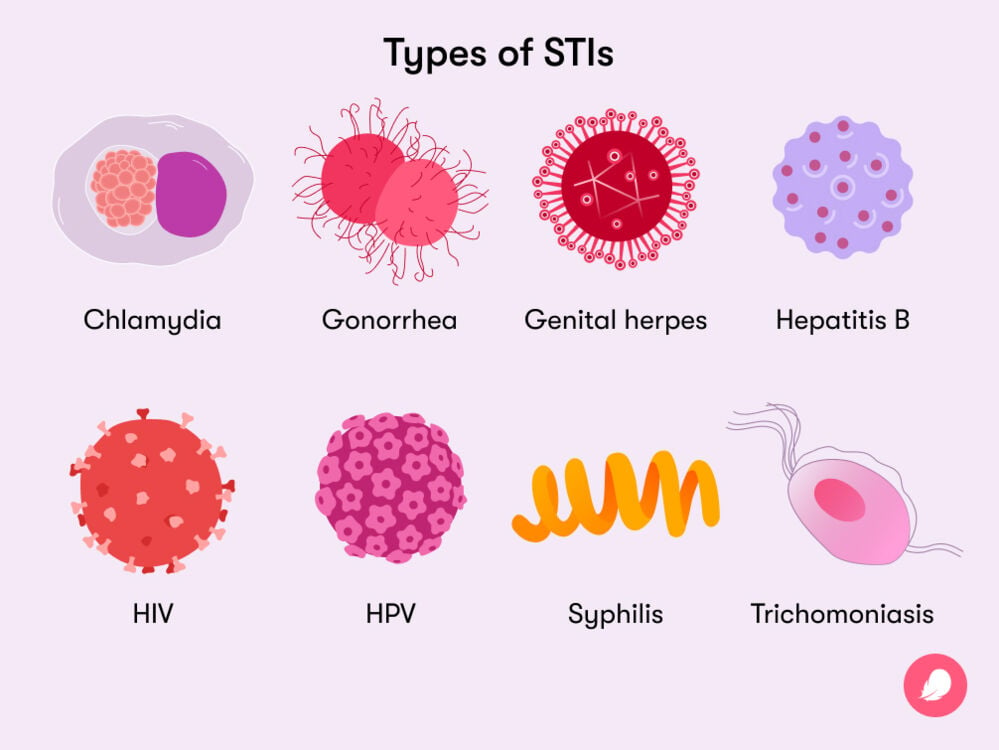
There are more than 30 different bacteria, viruses, and parasites that are known to be transmitted through sexual contact. And chances are, you’ve probably heard of some of the most common STIs. Do chlamydia, gonorrhea, and herpes sound familiar? Here’s what you need to know about all those and more.
Chlamydia
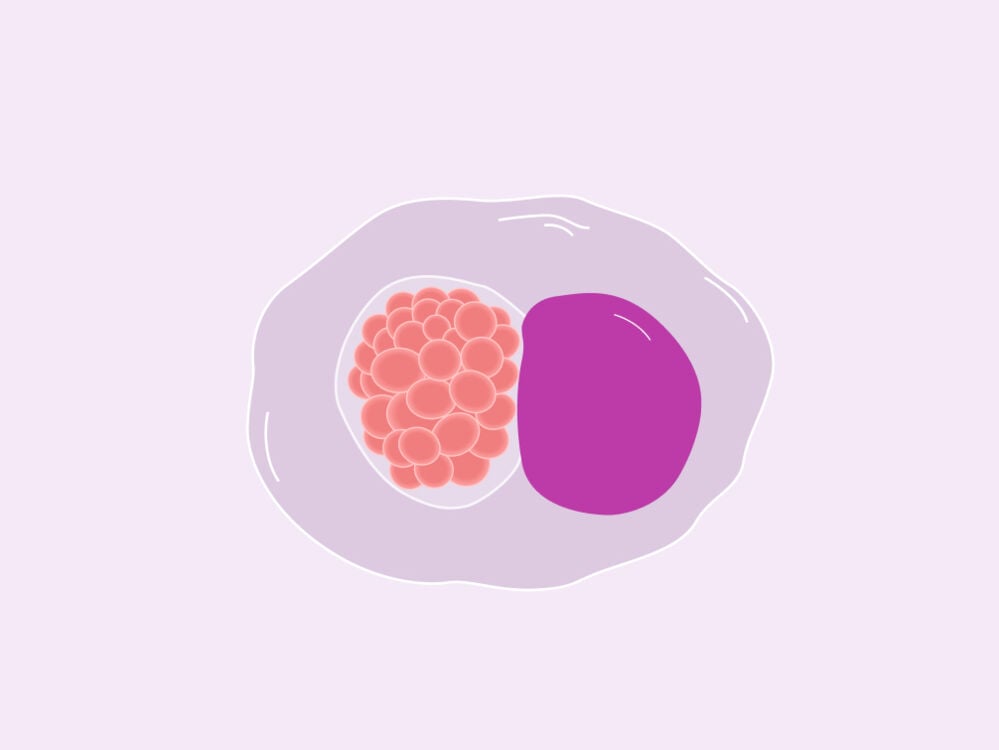
What is it?
Chlamydia is likely the STI you’ve heard the most about. It’s very common, (the Centers for Disease Control and Prevention estimate that 1 in 20 sexually active young women aged 14–24 has chlamydia), and while there’s certainly no shame in catching it, it’s definitely something you’ll want to see a doctor about.
What are the symptoms?
Chlamydia often has no symptoms, making it particularly difficult to spot, but some people may notice:
- Discharge from their vagina or penis
- Pain when you pee (or you could need to pee more often)
- Pain in the abdomen or pelvis
- Redness or swelling of the genitals
- Bleeding between periods
- Sore throat
- Fever
- Swelling of lymph nodes
Find out more about what chlamydia might feel like.
How is it treated?
Luckily, chlamydia is easily treated with antibiotic pills. More than 95% of people will be cured if they take their antibiotics correctly and likely won’t need to return to the doctor for a follow-up. This just shows why it’s so important to chat to a health care professional if you suspect you’ve got an STI, as they can usually find a simple solution.
Gonorrhea
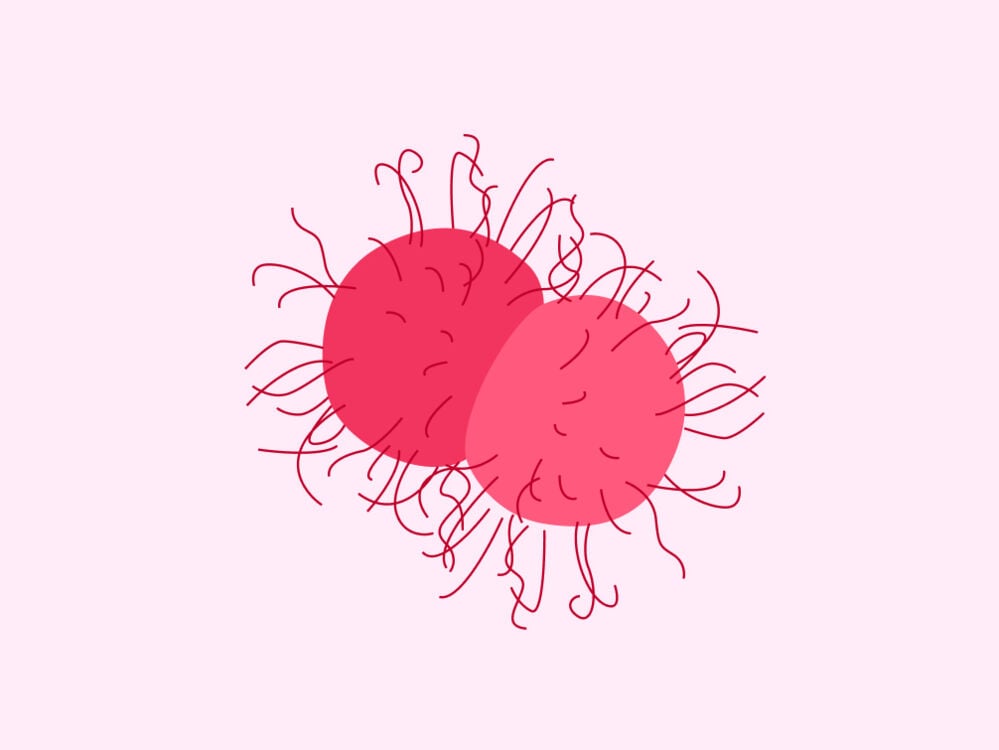
What is it?
Sometimes referred to colloquially as “the clap” (no, we’re not sure why either!), gonorrhea is spread through vaginal, anal, and oral sex. But be warned, ejaculation doesn’t need to occur for it to do so.
The Centers for Disease Control and Prevention estimate that approximately 1.6 million new infections occurred in the United States in 2018, and more than half are among young people aged 15–24.
What are the symptoms?
Around one in 10 men and almost half of women won’t experience any symptoms with gonorrhea. But those who do may experience thick green or yellow discharge from the vagina or penis, pain when peeing, and bleeding between periods. Reach out to a doctor if you notice anything like this.
How is it treated?
Luckily, the treatment for gonorrhea is quite straightforward. A single antibiotic injection is usually given to treat it. It should begin to be effective within a couple of days, but you’ll likely need to attend a follow-up appointment a week or so later.
Genital herpes
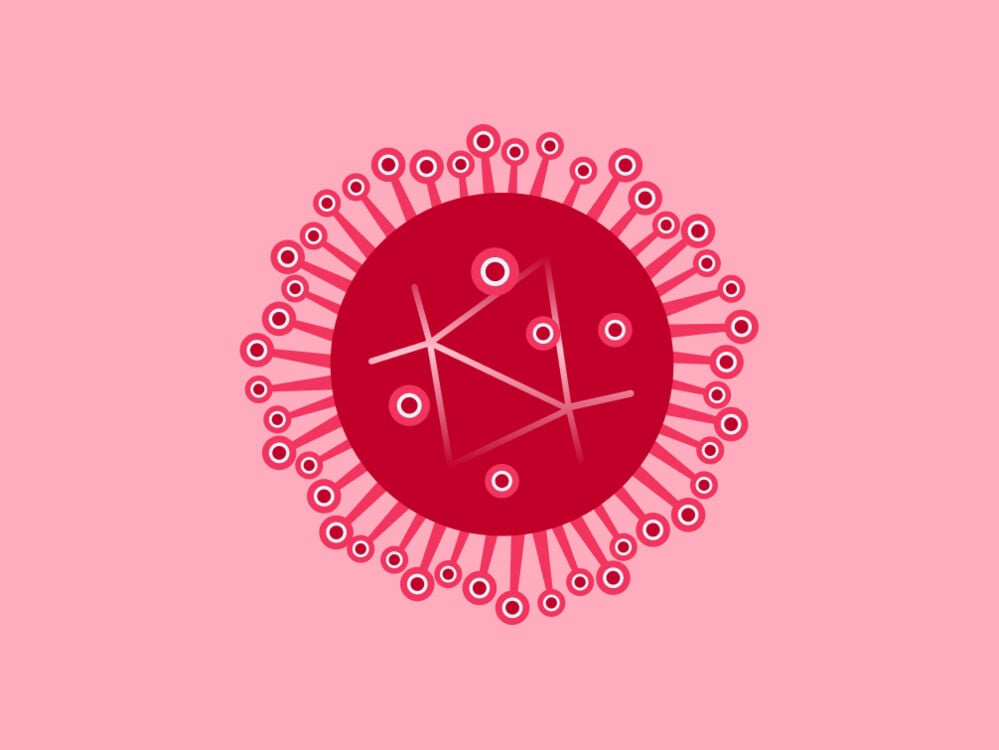
What is it?
Genital herpes is a very common STI that is spread by having vaginal, anal, or oral sex with someone who has the infection. You can get herpes if you have contact with a herpes sore, saliva from a partner with an oral herpes infection, or genital fluids from a partner with a genital herpes infection.
What are the symptoms?
Most people with genital herpes don’t know they have it since symptoms are generally mild or nonexistent. In some cases, sores appear as one or more blisters on or around the genitals, rectum, or mouth (also known as an outbreak). The first time you experience an outbreak, you may also notice flu-like symptoms.
How is it treated?
There is no cure for genital herpes, but some medicines can help with outbreaks. The best thing to do is chat with your health care provider for specific advice on how to treat your case of genital herpes.
Hepatitis B
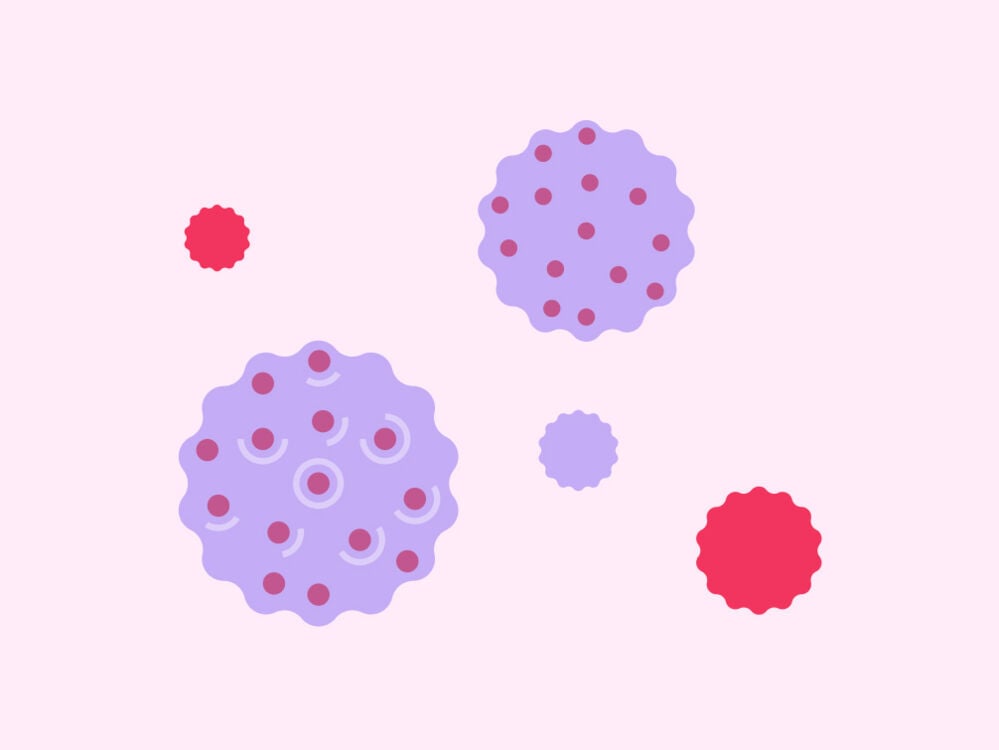
What is it?
A liver infection that can be life threatening, hepatitis B sounds pretty scary. But luckily, most people are protected against hepatitis B from a young age (more on that below). It can be spread through bodily fluids during sex, from mother to child during birth, or via unsafe injections.
What are the symptoms?
Not everyone with hepatitis B will have symptoms, but those who do might experience stomach pain, nausea, fatigue, and jaundice (a condition where the skin and whites of the eyes can turn yellow).
How is it treated?
Treatment can include antiviral medication or alternatively injections. But for prevention, a hepatitis B vaccination offers 98% to 100% protection from the infection. It’s typically given as two, three, or four doses, with the first shot given shortly after birth and the remaining vaccines completed by six to 18 months of age. So it’s important to check, but there’s a good chance you could be protected against hepatitis B without even realizing it. That doesn’t mean you should ditch barrier methods of protection like condoms, though. It’s always best to be safe!
Take a quiz
Find out what you can do with our Health Assistant
Human immunodeficiency virus (HIV) infection
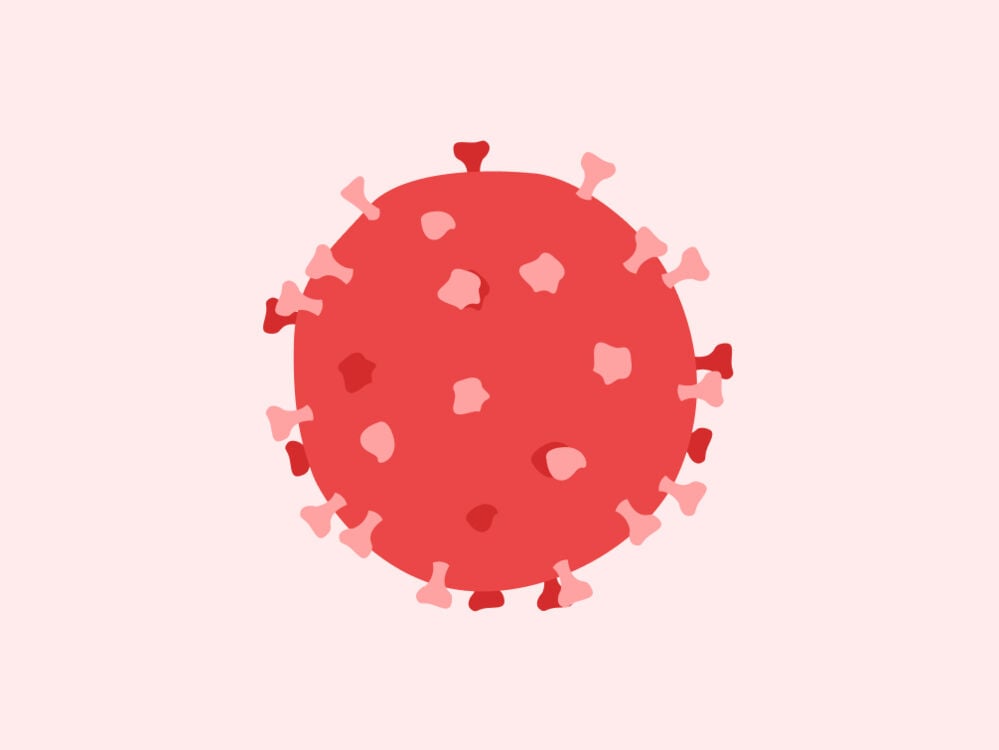
What is it?
You might have heard the human immunodeficiency virus more commonly referred to as HIV. It’s a virus that attacks cells that help the body fight infection, which can make a person more vulnerable to other infections and diseases. If it goes untreated, HIV can lead to acquired immunodeficiency syndrome (AIDS, the collective name given to a series of potentially life-threatening infections that can take over when your immune system has been damaged by the HIV virus).
What are the symptoms?
Most people will have flu-like symptoms within two to four weeks of becoming infected. This can include a fever, sore throat, rash, night sweats, mouth ulcers, and muscle aches.
How is it treated?
No HIV cure exists, but it can be controlled. One treatment called antiretroviral therapy (ART) involves taking a combination of HIV medicines (called an HIV treatment regimen) every day. It can be so effective that it can leave many people with HIV displaying no clear signs of the disease.
Plus, there are two other options. Pre-exposure prophylaxis (PrEP) medicine is available for people who feel they’re at risk of HIV to take as prevention. Post-exposure prophylaxis (PEP), on the other hand, is a medicine that can be taken within 72 hours after a possible exposure to the virus and can stop it from taking hold.
HPV infection
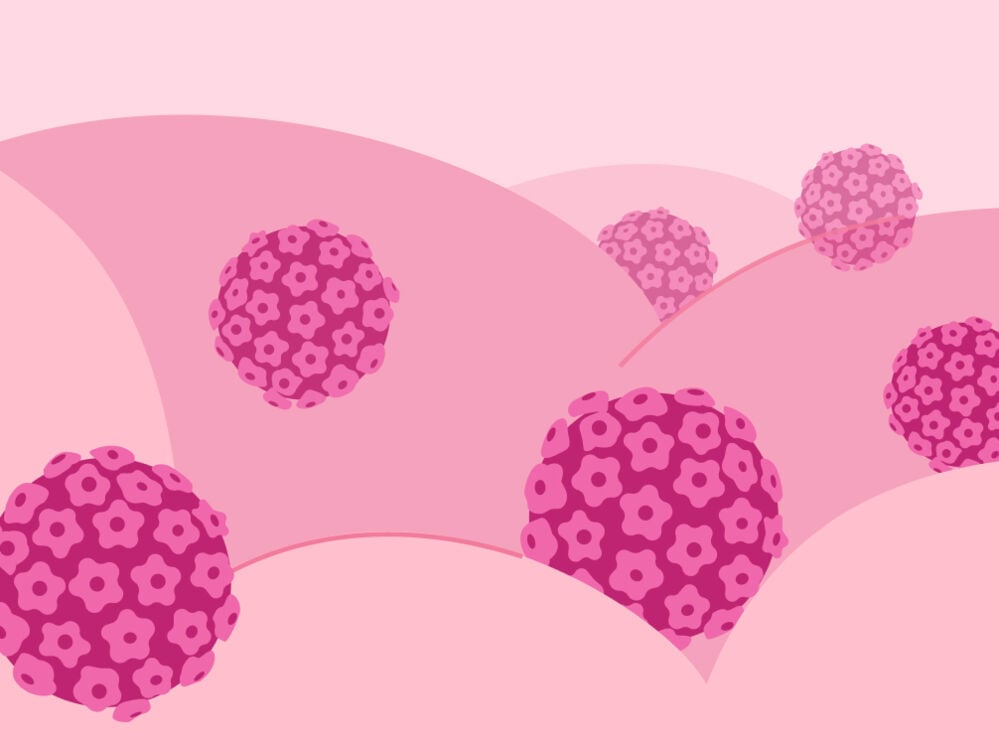
What is it?
The full name of HPV is human papillomavirus, and it’s an extremely common STI. In fact, almost every sexually active person will get HPV at some point if they’re not vaccinated against it. It’s spread mostly by vaginal or anal sex but occasionally from skin-to-skin touching.
What are the symptoms?
The majority of those who are infected won’t notice any HPV symptoms because the virus doesn't tend to cause any. However, some people do go on to develop genital warts after catching certain strains of HPV. In more serious cases, cervical cancer can be caused by HPV. This sounds scary, but it can often be prevented before it properly develops, thanks to Pap smears (which is why it’s so important to go when you’re invited!).
How is it treated?
There is no treatment for HPV itself, because for most people, HPV goes away within a couple of years. An HPV vaccine is the best way to protect against the highest risk strains of HPV.
Syphilis

What is it?
Syphilis is a curable STI that can cause serious health problems without treatment, so it’s good to clue yourself up on the signs and symptoms.
What are the symptoms?
There are four stages of syphilis (primary, secondary, latent, and tertiary). Each stage has different signs and symptoms.
During the first (primary) stage of syphilis, you may notice a single sore or multiple sores. The sore will arise at the location where syphilis entered your body.
The secondary stage may lead to rashes or sores. During the latent stage, there will be no visible signs and symptoms. Most infected people do not develop the final (tertiary) stage of syphilis, because it’s only reached between 10 and 30 years after you’re first infected. So if you undergo regular STI testing, you’d be well aware you had it long before this. But those who do develop it will see many different organ systems affected, including the heart, blood vessels, brain, and nervous system.
How is it treated?
Antibiotics can be used to treat syphilis, and it’s always best to take them as soon as possible after infection.
Trichomoniasis
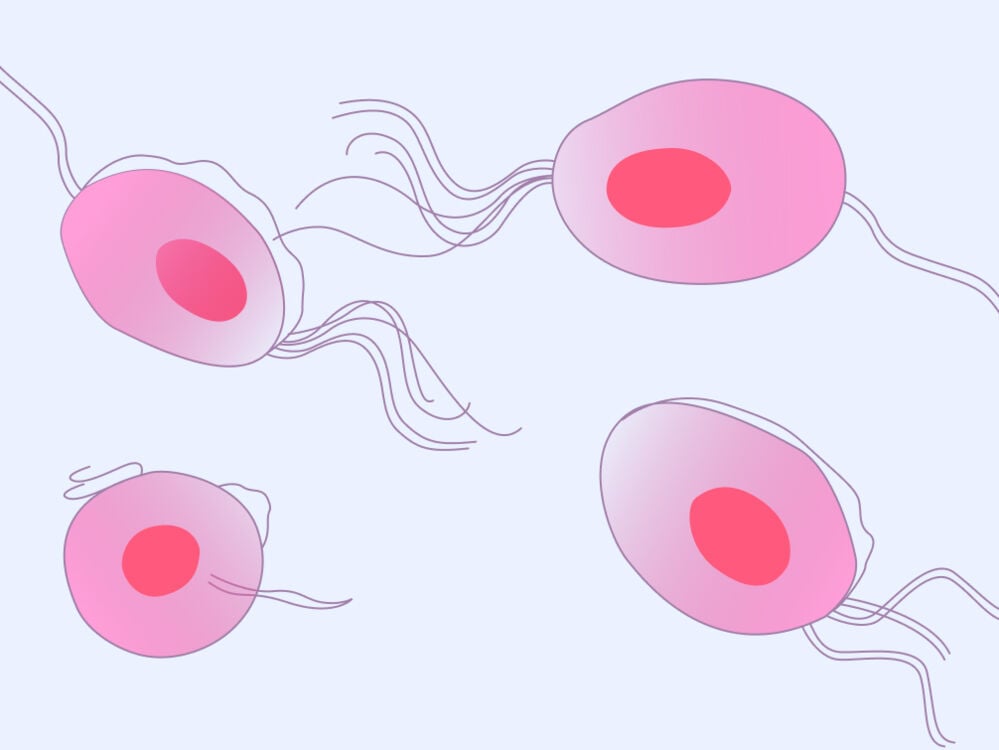
What is it?
Trichomoniasis is a common but curable STI that’s spread by having sex without barrier protection. In fact, it’s the most common curable STI around now.
What are the symptoms?
The majority of infected people will not have symptoms, making it one of the sneakier STIs, but those who do may notice itching, irritation, or burning sensations in the genital area, as well as yellow or greenish, foul-smelling discharge.
How is it treated?
Simple oral medication can be given by a doctor to treat trichomoniasis.
What are the risk factors of STIs?
It goes without saying that you want to try to avoid getting an STI, and that’s for a number of reasons. Short-term risks of catching an STI could include an impact on your sex life, confidence, stress levels, and occasionally some discomfort in the area of infection.
Longer-term risks can be more complicated and can depend on the STI you have. In some cases, some infections (such as chlamydia or gonorrhea) can lead to infertility, while others like HPV may increase the risk of cancer. In cases of syphilis and HIV that are left untreated, even death is possible. This all sounds very scary, but there’s a reason we’re sharing it: to underline the importance of protecting yourself against sexually transmitted infections. If you can avoid getting one, you should! More on that below.
What should you do if you think you have an STI?
As we’ve mentioned, not all STIs have symptoms, which is why it’s important to get tested regularly, especially every time you have unprotected sex. There are many testing schemes around the world, including at sexual health clinics, via health care providers, or at-home tests. A quick online search should help you find your easiest and nearest option.
When is it time to seek medical help?
If you test positive for an STI, your health care provider should be able to help you with the next steps, as each one will need different treatments. Luckily, most are perfectly resolvable, so try not to worry too much.
How to stop the spread of STIs
The most effective way to stop the spread of STIs is to use a barrier method of protection every time you have sex, such as condoms. And remember, this doesn’t just mean penetrative vaginal sex — it includes anal and oral sex, too. This is particularly important when you’re having sex with a new or untested partner. You don’t need to feel shy about requesting to use protection. If your partner makes you feel uncomfortable about it, perhaps it’s an indication that they might not be the kind of person you want to be intimate with.
Vaccines against HPV and hepatitis B also exist and will prevent catching and transmitting the virus.
We know STIs spread regardless of these protective methods, and that’s why it’s so important to inform previous and future sexual partners if you’ve got one. It might feel like a difficult conversation to tell someone they gave you an STI, or to share that you have one currently. But remember the stats around how common STIs really are, and that’ll give you an idea of how many people have these kinds of talks every day.
How do you get tested for an STI?
Testing depends on where you are in the world, but most screenings are simple and easy. Testing for chlamydia and gonorrhea can usually be done with urine or a swab of the affected area, while blood tests are needed for HIV and syphilis. Search online to see what’s available near you.
How to protect yourself from sexually transmitted infections
The most effective way to avoid getting an STD is to abstain from sex. But if you’re having sex, condoms and vaccines are effective methods of preventing catching and spreading STIs. In the case of HIV, PrEP can be taken to help those at risk.
Sexually transmitted infections (STIs): The takeaway
So, to recap everything we’ve learned: STIs are generally passed through sexual contact, which means you need to be regularly tested, particularly every single time you have unprotected sex with a new partner.
STIs are common, and there’s a very good chance you or someone you know will catch one at some point. However, a medical professional will help you find the right solution. So if you’re experiencing symptoms, be sure to get tested immediately to prevent any long-term damage. And don’t let shame or embarrassment get in the way. The experts have seen it all before.
The good news is there’s an effective treatment for almost all STIs. The better educated we are about STIs, the safer we can all be, which also means less stigma. Win–win!


Hey, I'm Anique
I started using Flo app to track my period and ovulation because we wanted to have a baby.


The Flo app helped me learn about my body and spot ovulation signs during our conception journey.


I vividly
remember the day
that we switched
Flo into
Pregnancy Mode — it was
such a special
moment.
Real stories, real results
Learn how the Flo app became an amazing cheerleader for us on our conception journey.
References
“Adult Jaundice.” Cleveland Clinic, my.clevelandclinic.org/health/diseases/15367-adult-jaundice. Accessed 18 Nov. 2022.
“Detailed STD Facts: Chlamydia.” Centers for Disease Control and Prevention, 6 June 2022, www.cdc.gov/std/chlamydia/stdfact-chlamydia-detailed.htm.
“Detailed STD Facts: Gonorrhea.” Centers for Disease Control and Prevention, 2 June 2022, www.cdc.gov/std/gonorrhea/stdfact-gonorrhea-detailed.htm.
“Genital Herpes.” Mayo Clinic, 13 Oct. 2020, www.mayoclinic.org/diseases-conditions/genital-herpes/symptoms-causes/syc-20356161.
“Gonorrhoea.” NHS, www.nhs.uk/conditions/gonorrhoea/. Accessed 18 Nov. 2022.
“Hepatitis B.” World Health Organization, www.who.int/news-room/fact-sheets/detail/hepatitis-b. Accessed 18 Nov. 2022.
“Hepatitis B Vaccine.” Centers for Disease Control and Prevention, www.cdc.gov/vaccines/hcp/vis/vis-statements/hep-b.pdf. Accessed 18 Nov. 2022.
“HIV and AIDS.” NHS, www.nhs.uk/conditions/hiv-and-aids/. Accessed 18 Nov. 2022.
“HIV Treatment as Prevention.” Centers for Disease Control and Prevention, 21 July 2022, www.cdc.gov/hiv/risk/art/index.html.
“HIV Treatment.” HIVinfo.NIH.gov, hivinfo.nih.gov/understanding-hiv/fact-sheets/hiv-treatment-basics. Accessed 18 Nov. 2022.
Horner, Paddy. “Chlamydia (Uncomplicated, Genital).” BMJ Clinical Evidence, vol. 2008, June 2008, www.ncbi.nlm.nih.gov/pubmed/19450291.
“PrEP and PEP.” Centers for Disease Control and Prevention, 1 Apr. 2022, www.cdc.gov/hiv/clinicians/prevention/prep-and-pep.html.
“Sexually Transmitted Infections (STIs).” World Health Organization, www.who.int/health-topics/sexually-transmitted-infections. Accessed 18 Nov. 2022.
“Sexually Transmitted Infections (STIs).” World Health Organization, www.who.int/news-room/fact-sheets/detail/sexually-transmitted-infections-(stis). Accessed 18 Nov. 2022.
Springer, Charles, and Philip Salen. “Gonorrhea.” StatPearls, StatPearls Publishing, 2022.
“STD Facts: Human Papillomavirus (HPV).” Centers for Disease Control and Prevention, 8 June 2022, www.cdc.gov/std/hpv/stdfact-hpv.htm.
“STD Facts: Syphilis.” Centers for Disease Control and Prevention, 28 June 2022, www.cdc.gov/std/syphilis/stdfact-syphilis.htm.
“STD Facts: Trichomoniasis.” Centers for Disease Control and Prevention, 28 June 2022, www.cdc.gov/std/trichomonas/stdfact-trichomoniasis.htm.
“What Are HIV and AIDS?” HIV.gov, www.hiv.gov/hiv-basics/overview/about-hiv-and-aids/what-are-hiv-and-aids. Accessed 18 Nov. 2022.




